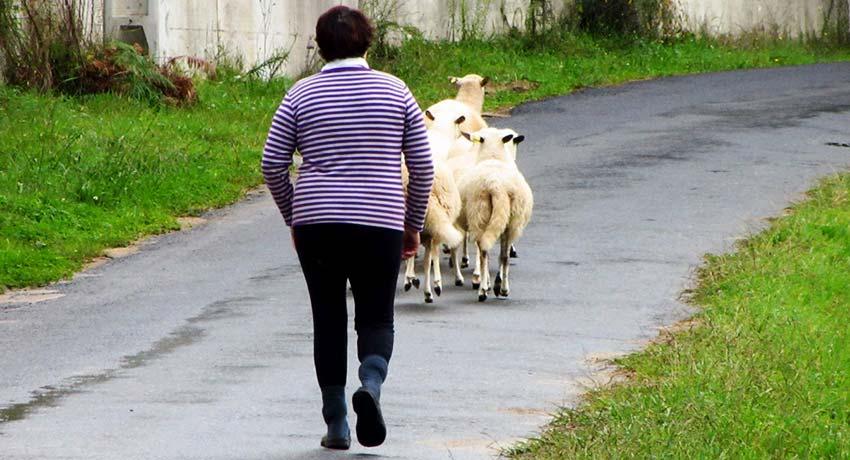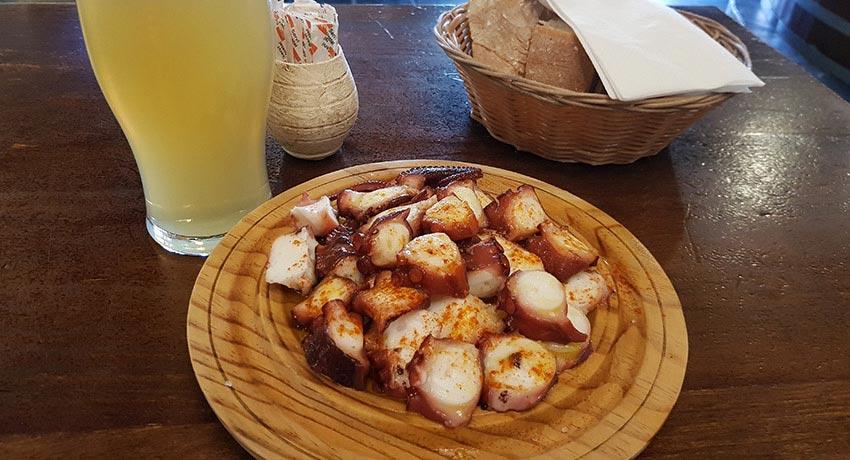El Camino in Galicia
Santiago is in the Galicia region in Spain and, if you haven’t been there before, you might be wondering what it is like and what surprises await you when you arrive for your Spain pilgrimage.
Perhaps you have been in Spain before and have some idea about what to expect or maybe you are new to Spain altogether. Either way, Galicia is different from the rest of regions in Spain. You will be able to experience the history of el Camino de Santiago while you enjoy the impressive landscapes and delicious Camino food.
Spain is slightly smaller than Texas but despite its relatively small size, it is a remarkably diverse country and its people and culture vary significantly from East to West and North to South.
Throughout the ages, the Romans, Visigoths, and Muslim empires successively expanded their presence through Spain and left behind an immensely rich heritage as they contributed their own customs and traditions to the local culture. The original people that inhabited Galicia before Roman times were called Iberian Celts.
Celts arrived around the 6th century B.C. from Northern Europe and brought with them symbols and traditions that are still conserved to this day.
Landscapes in Spain are a combination of dense forests, vast plains and striking mountain ranges. There are large contrasts between the desert-like areas of the interior, the seaside landscape with sand beaches on the Mediterranean and the imposing cliffs and rugged coastlines with icy cold waters of the Atlantic Ocean on the Costa de A Morte and the Cape of Finisterre (“end of the Earth”). Every corner of the country is worth exploring if you have some time, the cultural heritage and natural landscapes are spectacular.

What makes Galicia different from the rest of Spain? Galicia is often referred to as the “Spanish Ireland”, not only because of its predominantly green mountains and rainy climate, but also because of the mentioned Celtic cultural heritage.
As you start your Spain pilgrimage through Galicia, you will traverse dense oak, chestnut and eucalyptus forests and descend into foggy valleys that lend a special charm to the Camino walk in the mornings. It is common to see cattle grazing on the fields and even horses, depending on the season.
The cobblestone paths are mostly remnants of the ancient Roman roads conserved and maintained through the years as pilgrims made their way on el Camino de Santiago. There are also many unpaved forest paths that depending on the rainy season might be muddy at times.
Throughout the route you will encounter centuries-old roman bridges like the one at Rivadixo de Abaixo and at the same time, some makeshift ones over small streams made with recycled materials from daily life to help the pilgrims navigate their way easily.
As you make your way through the Galician trails and forests you often experience a feeling of wonder, as if a fairy or magical creature is going to appear any minute.
I’ve never seen any myself, but I have met a lot of wonderful people, mostly older farmhands and villagers that live off the land as they have all their lives. The Camino walk traverses many rural areas where elderly villagers raise livestock and grow food in small orchards behind their homes.

Galicia is one of the provinces of Spain that took longer to develop. Surrounded by imposing mountains, it did not enjoy access to roads and infrastructure until later and resorted to agriculture and farming as a way of life. The younger generations have long since moved back to the cities after they left the villages for college and never looked back.
Villages appear to be frozen in time and seem disconnected from the world, even if every day they see hundreds of people walk through on their pilgrimage to Santiago.
Villagers will often greet you as you walk by with a “buen camino” or “cuando llegues a Santiago da un abrazo al santo de mi parte” (when you get to Santiago, hug the Saint for me). If you end up talking to any of them beyond that, they may ask where you come from or ask if you need directions if you seem lost. There are a fair number of Galician immigrants around the world, so you may be surprised to learn that they have relatives in Argentina, Brazil or even the US.
Spain has a long-standing catholic tradition so the Camino pilgrimage to Santiago is well regarded and pilgrims are respected by the locals.
People are truly kind to pilgrims on the hiking trail. It is an aspiration for all Catholics in Spain to be able to walk the Camino at least once in their lifetime. For this reason, pilgrims are always welcome, no matter where they come from.
El Camino food is particularly appealing in Galicia, which showcases a large variety of fresh products from the land and the sea, directly to your table. In most places, produce is homegrown, always served fresh as it finds its way into delicious salads or fruit plates. As you walk by on your pilgrimage, you will see orchards packed with cabbages and other collared greens that are the main ingredient of the famous caldo Gallego (Galician broth).
Do not forget to sample the famous empanada gallega (Galician tuna pie) that even though it shares the same basic ingredients everywhere in the region, will have an amazingly unique taste as each baker adds his/her own personalized touch.
Empanada is a typical dish of humble origins so ancient that it is already depicted in a stone relief located on the main portico of the Cathedral in Santiago.
When you get there, remember to look for it on the upper arches on the right side. You will see that there are two people sharing an empanada.
Galicia has a great selection of steaks as Galician beef is renowned in Spain for its freshness and quality. Cattle is raised in the open pastures, as you will undoubtedly see during your walk. For that matter, so are chickens which you will encounter often along the way.
Our review of el Camino food would not be complete if we neglected to mention the excellent seafood in Galician cuisine. The “Galician octopus” (pulpo a la gallega) is boiled octopus seasoned with just salt, olive oil and paprika. It is amazing how simple this dish is, and how incredibly wonderful it tastes.

You can wash it down with the excellent wines from the Rias Baixas (Albariño), typical from the Galician region, famous for their mouth-watering acidity and aroma of citrus fruits. A well-earned reward after all your Camino walking during the day.
Did we help paint a picture of what you can expect during your Spain pilgrimage in Galicia? Post your comments below.



